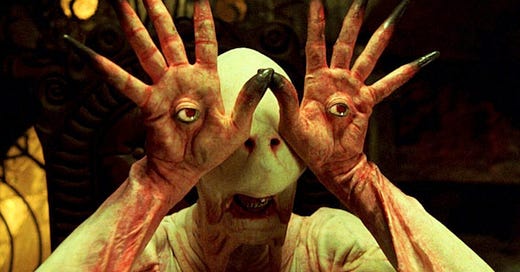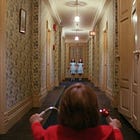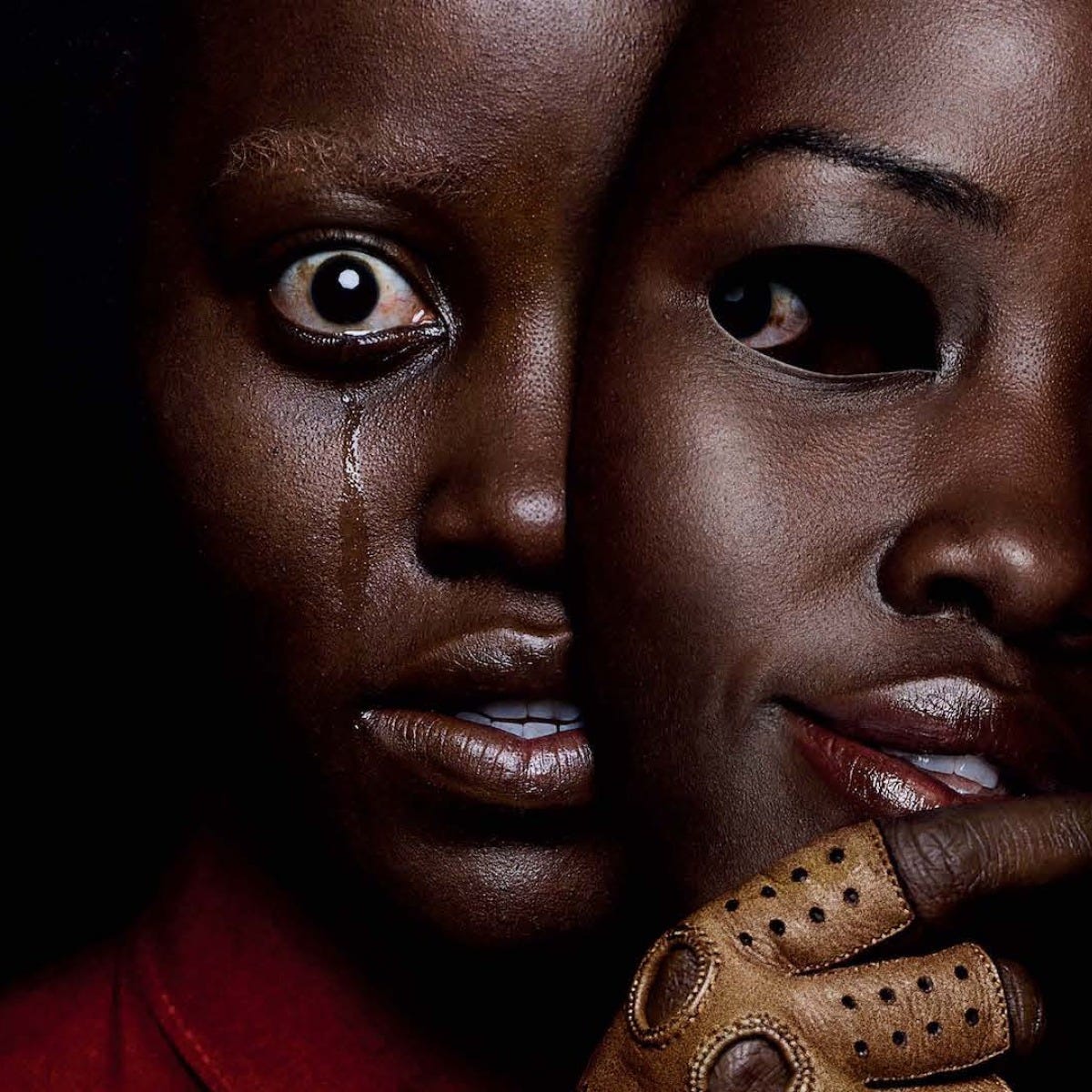If you are like me, when October comes around your thoughts turn to a festering pile of macabre viscera teeming with writhing eldritch creatures that burst forth from the rot of your mind to gibber their terrifying oaths of the damned! That is, you think about horror.
Horror is a genre that fascinates me, in part for its duality. It’s the genre of cheap schlocky gore as well as the home of philosophical debates about how to best guide readers to encounters with the sublime. I’m watching horror films and reading horror books this month and thinking about the craft of horror. How do we best raise the hair on our readers’ necks? What methods most effectively chill the spines? What words will curdle the blood?
Last Halloween, I wrote a “Horror Terms 101” article that looked at some of the central concepts of horror like “terror vs. horror,” “the weird,” “the eerie,” and “the gross out.” But the concept that I always find the most fascinating and fruitful (for my own writing) is “the uncanny.” So I thought I’d expand on that here.
You’re likely familiar with the uncanny, but I’ll give a brief overview. “The uncanny”—in the context of horror—is the feeling you get when something is simultaneously frightening and familiar. It is a feeling of eeriness. Offness. The creeps. Psychologically, you can’t quite place the source of the uncanny as threat or safety, normal or abnormal, intimate or strange, dream or reality. Or as Lacan says, it is when “we do not know how to distinguish bad and good, pleasure from displeasure.”
The uncanny was famously elaborated by Sigmund Freud, who looks at the etymology of German word unheimliche (“not of the home”). His essay is well worth reading though it focuses on his psychoanalytical theories about the uncanny being rooted in what we have repressed either personally or societally. Think of how as a child you perhaps believed your dolls were alive or that you had an invisible friend. That wasn’t uncanny when you were a child. As an adult, you likely don’t believe those things are possible. But if you suddenly—even for a brief moment—felt that a doll was alive or that an invisible person was in your house, you’d feel the uncanny.
I think the simplest way to think about the uncanny from a craft perspective is that it’s when the strange becomes familiar, or the familiar becomes strange.
Think about how much horror involves a mingling of the familiar and strange. People you know—or rather that the character knows—who become other in some way: zombies, vampires, pod people, demonic possession, alien imitation.
Or childish ideas becoming real in the story: living dolls, invisible friends, dreams fiction invading reality, inanimate objects that move.
Eerie repetition of numbers. Deja vu. Doubling. Doppelgangers.
A familiar place, such as the home, revealing something hidden. A secret door. A unknown room. Something hidden in the walls.
Characters who seem human yet are off in some way. Too fast or too still or their body parts are in the wrong place (see the Pale Man from Pan’s Labyrinth up top) or their movements are off.
I could go on and on. I think you can see that the uncanny appears in countless works of horror. Indeed, in might seem like the uncanny is so broad it might encompass everything in horror. But many terrifying things are merely familiar in the sense of common to our understanding of the world. Serial killers or deadly animals, say. Plenty of horror movies about those. Other threats are simply unfamiliar, such as literal alien monsters or demons. Plenty of horror works about those too.
The uncanny is also evoked through an eerie sense that reality is off… but other effects take over when an object moves from “off” to active threat. Living dolls are a classic example of the uncanny, but I’d say Chucky ceases to be uncanny when he’s just running around stabbing people. A character noticing a loved one is somehow off, moving a bit wrong or their skin looking unusual, can be uncanny at the start of a zombie film. Hordes of zombies screaming and killing everyone isn’t very uncanny.
How does one evoke the uncanny in one’s own work? First, the uncanny blossoms when we sense there is something off about the world we know. In the hesitation between the real and the unreal. So it is good to ground the story in the “realistic” world. To continue with living dolls as an example, the reason Toy Story is not uncanny is partly tone and partly because it is a cartoonish reality in style and medium. You likely also want your characters to disbelieve the unreal when it occurs. If the characters happily accept the bizarre and the unnatural, the uncanny is lost.
Once you’ve established a baseline of realism, think of how you can make something strange seem familiar or something familiar seem strange. Often this can be a small thing. Stephen King has an uncanny story where a finger appears in a man’s sink, then grows longer and longer. Brian Evenson, a great master of the uncanny in prose, has a story that has haunted me for years (“Windeye” from Windeye) about discovering an extra window on the outside of a house that doesn’t appear on the inside. Of course, writing a great story, much less a great terrifying story, is always difficult. I’m not suggesting the writing is simple, but only that uncanniness can be found in making something real be “off” in a small (yet creepy) way.
It is also typically best—as is true in so many things in writing—to filter the uncanny through your characters. If the source of the uncanny is familiar to your main character, then it will have more power. A secret room in your character’s home. The protagonist’s loved one or friend who turns alien. The narrator’s pet or apartment building or toothbrush that becomes estranged.
One point Freud makes that rings true to me is that an uncanny element “loses all power of arousing at any rate an uncanny horror in us as soon as the author begins to amuse himself at its expense.” You can’t treat the unreal as a joke. Quite a few popular horror books have failed for me by the author goofing around with their horror elements even as they tried to shock with mountains of gore and death.
This isn’t to say humor should be absent from horror by any means. Humor is essential in horror for me. But the horror element itself won’t evoke the uncanny if the author mocks it. On the other hand, tonal shifts can work well. The quick veer from humorous scene to eerie scene can enhance the uncanny. (David Lynch is a master of this in film.)
I always love to think about what prose can do that film can’t. Film is better at evoking the uncanny through visuals and sound. The expressions and movements of the actors (as in many of the images above) or the way Lynch manipulates sound to enhance the uncanny. But there are ways to evoke the uncanny in the prose itself. Writers can think about using estrangement of the page. Think of how House of Leaves by Mark Z. Danielewski disorients the reader with strange text layouts. Helen Oyeyemi’s White is for Witching and Samanta Schweblin’s Fever Dream are two excellent horror books that use POV and form to evoke the uncanny.
The uncanny can also be evoked on the page through estranging language. I often think of Kelly Link’s “The Specialist’s Hat” (from Stranger Things Happen) in which subtle changes in words—Dead vs dead, gray vs grey—as well as unnatural repetitions of words in the text are used to great eerie effect. Evenson has a story called “Born Stillborn” (from Songs for the Unraveling of the World) in which a man visits a “day therapist” and is visited by a “night therapist.” Just that phrase, “night therapist,” does so much work.
Those are a few ideas about adding the eerie and unearthing the uncanny in your prose. Remember the creepiest things are often not the most gory, evil, or deadly. Often they are the things that are so familiar… yet just a little bit off.
Since it is October and I plugged the works of Brian Evenson above, let me also plug McSweeney’s issue 71: Horror Stories (guest edited by Evenson). It includes a story of mine as well as stories by Stephen Graham Jones, Mariana Enríquez, Jeffrey Ford, Kristine Ong Muslim, and many more.














Sorry the images are so small, I hit the "end of email length limit" lol
Thanks for this, Lincoln. I exclusively edit (and occasionally write) nonfiction but consistently find your observations and explanations relevant and enlightening. This is such a great breakdown of the power of the uncanny. I think this is why Scary Stories to Tell in the Dark was so, well, scary; I still remember many of them, some thirty-plus years after I first cracked opened the book, probably while laying underneath a Teenage Mutant Ninja Turtles poster (anthropomorphic turtles who know martial arts: funny, not uncanny). A spider bite on your face is creepy. A spider bite on your face that hatches hundreds of baby spiders is uncanny (and horrifying). I'm also glad you mentioned Lynch, though I went directly to Lost Highway. Since seeing it, I can't hear smooth jazz without getting the chills.